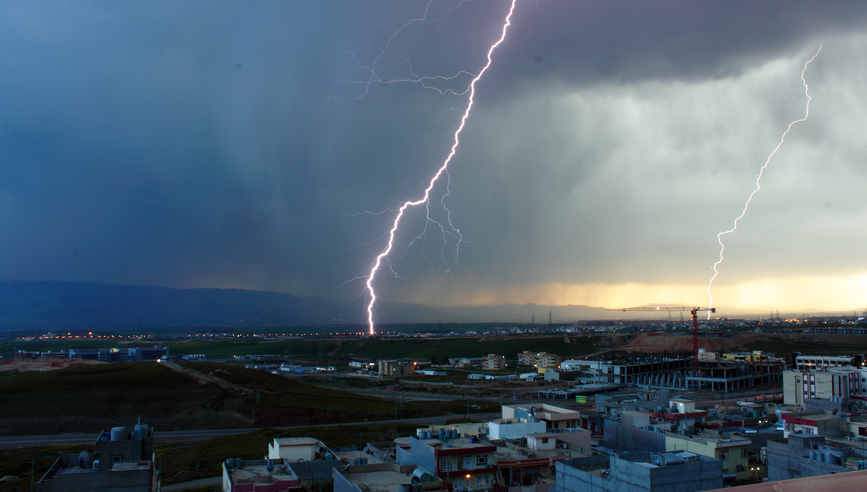Severe Convective Storms: A Preparedness Guide for Business Resilience


As a business owner, ensuring the safety of your employees and protecting your property is of utmost importance, especially in the face of severe convective storms. These unpredictable weather events can bring about destructive winds, hail and tornadoes, which can pose significant risks to both your workforce and your business infrastructure. Consider these tips to help you safeguard your business and employees before the storm hits.
Understand the risks of severe weather to your business
Storm preparedness starts with understanding the specific risks associated with your geographical area. Develop targeted strategies tailored to your business’s unique vulnerabilities and establish a plan to help ensure the safety of your employees. Use weather monitoring services like the National Weather Service to stay informed about potential storm threats. Consider the following as you formulate severe weather plans:
- Identify specific weather-related risks at your business location.
- Assess the vulnerability of your property to severe weather events.
- Analyze insights from historical storm data.
- Evaluate the potential effects on the workforce before, during and after a storm.
- Consider possible impacts on property accessibility, emergency response, supplies and power.
- Recognize the presence of valuable and/or weather-susceptible materials on the property.
- Incorporate special considerations for post-storm recovery and cleanup.
Mitigate storm risks to your business
Address various hazards posed by severe convective storms with a holistic approach. Consider these important factors.
Secure buildings and property
- Regularly inspect buildings for vulnerabilities, such as loose roofing materials or flashing, damaged windows or weakened structures. Address issues promptly to help enhance overall structural integrity.
- Trim trees and secure outdoor objects to help minimize debris risks during high winds.
- Invest in wind-resistant landscaping, impact-resistant windows, reinforced doors and storm shutters or window boarding for added protection.
- If you are planning to update the roof on your facility, consider impact-resistant materials to help enhance overall facility resilience.
Worker safety
- Establish, document and communicate clear safety protocols for employees.
- Conduct regular training sessions on evacuation routes, safe shelter locations and how to stay informed through reliable weather updates.
Emergency power backup
- Install backup power systems to ensure that critical operations can continue during power outages, including generators and uninterruptible power supply systems.
- Ensure that data storage systems have reliable backup mechanisms.
Supply chain resilience
- Evaluate and strengthen your supply chain by identifying alternative suppliers and establishing contingency plans.
Additional factors to consider by weather event
In the event of heavy rain, thunderstorms, lightning, hail or tornadoes, there are specific measures to take in order to help safeguard both your employees and your business.
Heavy rain
- Identify flood potential and assess conditions that may make your facility more vulnerable to damage. Promptly address issues such as roof leaks, foundation weaknesses and drainage problems.
- Develop and maintain effective stormwater management systems, including proper drainage channels and retention basins.
- Maintain clear gutters, roof drains and storm drains.
- Invest in rain-resistant mulch materials that are less likely to be displaced by heavy rain and block drains.
- Install flood barriers and use sandbags around entrances and critical infrastructure.
Thunderstorms, lightning and hail
- Consider installing impact-resistant windows to help minimize hail damage.
- Install lightning protection systems and regularly check them to help ensure they are in good condition and that there are no loose, damaged or missing connections.
- Relocate outdoor equipment and materials indoors or to sheltered areas during severe weather forecasts.
- Trim trees and branches to help minimize the risk of falling debris. Remove dead or weak branches that may pose a threat to buildings and structures.
- Invest in high-quality surge protectors for critical electronic equipment to help mitigate damage caused by lightning strikes and power surges.
- Educate employees on lightning dangers and emphasize seeking indoor shelter during thunderstorms.
Tornadoes
- Designate and identify safe shelter locations within the workplace, preferably in low, windowless areas such as basements or storm shelters. Ensure that all employees know the locations and procedures for seeking shelter.
- Provide employee training on tornado safety. Training should include how to recognize warning signs, understanding the difference between tornado watches and warnings, and emphasize the importance of taking immediate action when a tornado warning is issued.
- Conduct regular tornado drills to help familiarize employees with designated safe areas and emergency procedures.
- Institute a reliable emergency communication system to quickly disseminate tornado warnings and emergency instructions to all employees. Use multiple communication channels like text messages, sirens and intercom announcements.
- If conditions allow, anchor outdoor equipment, signs and other loose objects that could become projectiles in high winds. Implement a routine to secure or relocate items that may pose a threat during tornado warnings.
Proactive planning and comprehensive safety measures are key to weathering severe convective storms successfully. By prioritizing employee safety, fortifying your property and implementing robust business continuity plans, you can help to reduce the impact of severe convective storms on your business. Stay informed, stay prepared and work to strengthen the resilience of your workforce and property against the forces of nature.
To learn more about how to protect your business, contact your insurance agent or a Travelers representative today.



